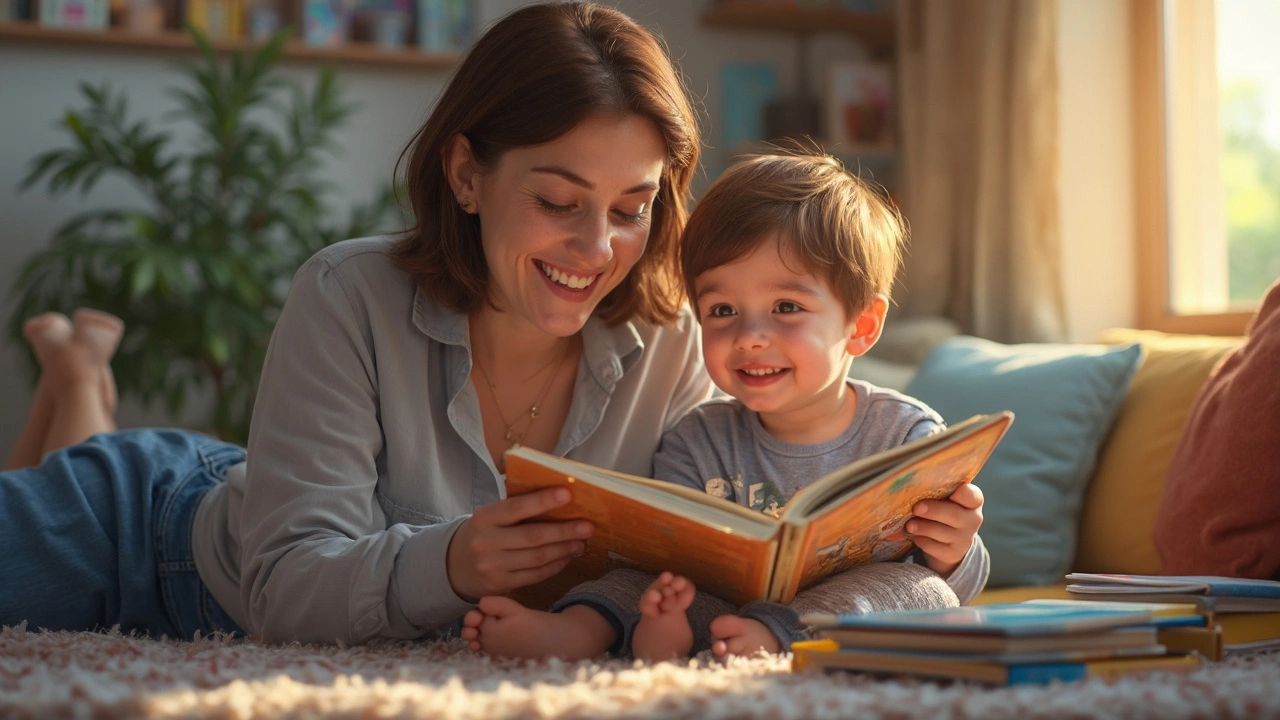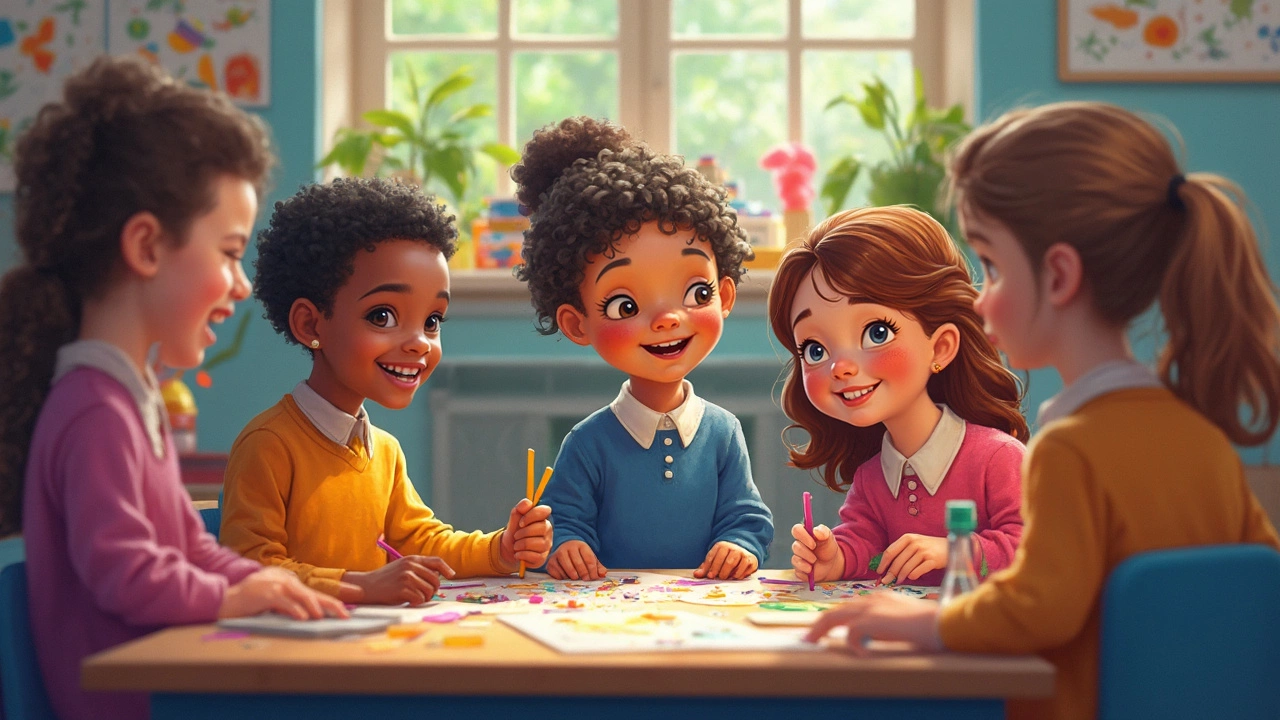When we talk about special education, one of the big questions that pop up is whether children in these programs know they're 'special.' It's not a straightforward yes or no. Kids in special ed often realize they are different through their interactions in school and at home. It's key for us to consider how they understand this difference and shape a healthy self-image.
Self-awareness in children varies greatly. Some kids are quite perceptive, picking up on cues from teachers, classmates, or even the program's name itself. Others might only notice it through the support they receive. Their understanding is influenced by age, cognitive abilities, and social interactions. So, how do we navigate this terrain to ensure they feel safe and positive about their unique qualities?
- Understanding Self-awareness in Kids
- Influences on Awareness
- Supporting Positive Self-identity
- Promoting Inclusion in Classrooms
Understanding Self-awareness in Kids
Self-awareness is a fascinating journey for every child, but it can be unique and complex for those in special education. It's about knowing oneself, recognizing personal strengths and challenges, and understanding how they're perceived by others. For kids in special ed, this process can vary greatly.
Generally, self-awareness begins to develop in childhood as kids start noticing differences between themselves and peers. It largely depends on age and developmental stages. Small kids might notice things like needing extra help, while older children could be more aware of their learning pace compared to classmates. This awareness is crucial as it impacts their self-esteem and motivation.
The Role of the Environment
The environment plays a huge role in shaping self-awareness. A supportive family and school can create a nurturing atmosphere, reinforcing a child’s confidence in their uniqueness. Teachers often observe that students with supportive systems tend to view their needs in a more positive light.
School settings that emphasize inclusion make a significant difference. Initiatives like awareness programs or inclusion crafts foster an environment where differences are celebrated rather than stigmatized. In contrast, environments with little understanding or acceptance may lead to a negative self-image.
How Kids Perceive Special Education
Understanding of special education varies among kids. Some kids comprehend their 'special' status through labels or isolated learning activities. Others might notice it informally through peer interactions or classroom dynamics. The names used, like 'extra help' or 'special class,' can also influence how kids perceive themselves.
A study in 2022 highlighted that over 60% of children in inclusive settings felt better about their learning abilities compared to those in less integrated environments. This shows how essential positive framing and supportive dialogue are in shaping a child's self-awareness.
Parents and educators have the power to guide this journey. By understanding how these kids become aware of their special needs, we can better support them in a world where they feel truly recognized and appreciated.
Influences on Awareness
When it comes to kids in special education, their awareness of being 'different' is shaped by various factors. These influences can be as varied as the kids themselves and can come from both external and internal sources. Understanding these is important to help them build a strong, positive self-image.
External Influences
One of the main external factors is the school environment. The attitude of teachers and classmates can significantly impact how children perceive themselves. If classmates are inclusive and teachers focus on strengths rather than differences, it often leads to a more positive self-awareness.
Parental attitudes also play a crucial role. When parents treat educational support as a natural part of learning rather than highlighting it as something special, it creates a nurturing environment. It helps when parents talk openly about special needs as part of diversity rather than a setback.
Internal Influences
Internal factors include the child's age and cognitive development. Younger children may not fully grasp the concept of being in special education, while older kids might be more conscious as they compare themselves with peers.
Kids with strong emotional intelligence might also perceive 'specialness' differently. They might be more attuned to how others treat them and interpret these interactions more deeply.
| Influence | Impact |
|---|---|
| School Environment | Shapes the child's view on difference |
| Parental Attitude | Builds child's self-esteem and understanding |
| Age & Development | Determines self-awareness level |
Understanding these influences helps us craft better educational plans, tailored to each child's needs, and encourages a more positive sense of self among each special needs child.

Supporting Positive Self-identity
Building a positive self-identity in children with special needs is crucial. It's all about helping them understand their value and unique qualities. But how do we do that effectively?
Highlight Strengths
First, focus on what they can do rather than what they can't. Everyone has talents or areas they shine in. Find those strengths and emphasize them regularly. This simple act can have a massive impact on their confidence.
Open Communication
Encourage kids to talk about how they feel. Honest conversations about their experiences can relieve anxiety and foster trust. It’s vital that they feel heard and understood, which helps in forming a strong self-identity.
Role Models
Introduce them to role models with similar challenges. Seeing someone who has overcome similar obstacles can be incredibly motivating. It sets positive examples and shows them that success is attainable.
Positive Reinforcement
Use positive reinforcement consistently. Recognize their efforts, not just the achievements. This helps in creating a positive link between effort and self-worth, reinforcing their growing identity.
Inclusive Activities
Participate in inclusive activities that don't single them out. The more they feel a part of the broader group, the better they’ll integrate socially. This helps normalizing their experiences and nurture their social skills.
Supporting positive self-identity isn't a one-time job. It's an ongoing process that requires attention and care. But with these strategies, children in special education settings can grow more confident and self-assured.
Promoting Inclusion in Classrooms
Creating an inclusive environment in the classroom is vital in making sure every child feels valued, especially those in special education. Inclusive education benefits all students by fostering an environment of respect and understanding. But how can we really make it happen?
Start with Teacher Awareness
Teachers must be aware of the diverse needs within their classrooms. Regular training sessions can help educators develop strategies tailored to individual students. This continuous learning helps create more equitable classrooms where special needs children thrive alongside their peers.
Adapt the Curriculum
Modifying lessons to suit varied learning styles is key. Incorporating visual aids, hands-on activities, and technology can help engage children with special needs. For instance, using educational apps can make learning fun and accessible for everyone.
Encourage Peer Interaction
Peer relationships play a huge role in a child's self-esteem and understanding of their place in the group. Setting up buddy systems or group projects encourages kids to work together, promoting empathy and collaboration.
Open Discussions
Classroom discussions about diversity and acceptance should be frequent. Encouraging kids to talk openly about differences can dispel myths and foster a supportive environment. It's important for all students to see that everyone has unique talents to offer.
Leverage Data
Data suggests that schools with robust inclusion programs have higher overall student satisfaction. According to recent studies, inclusive education not just benefits academic performance but also enhances social skills for children in special needs programs.
Inclusion is not just a policy but a practice that needs commitment from the whole educational community. By implementing these strategies, classrooms become welcoming spaces where every child can grow and succeed.
